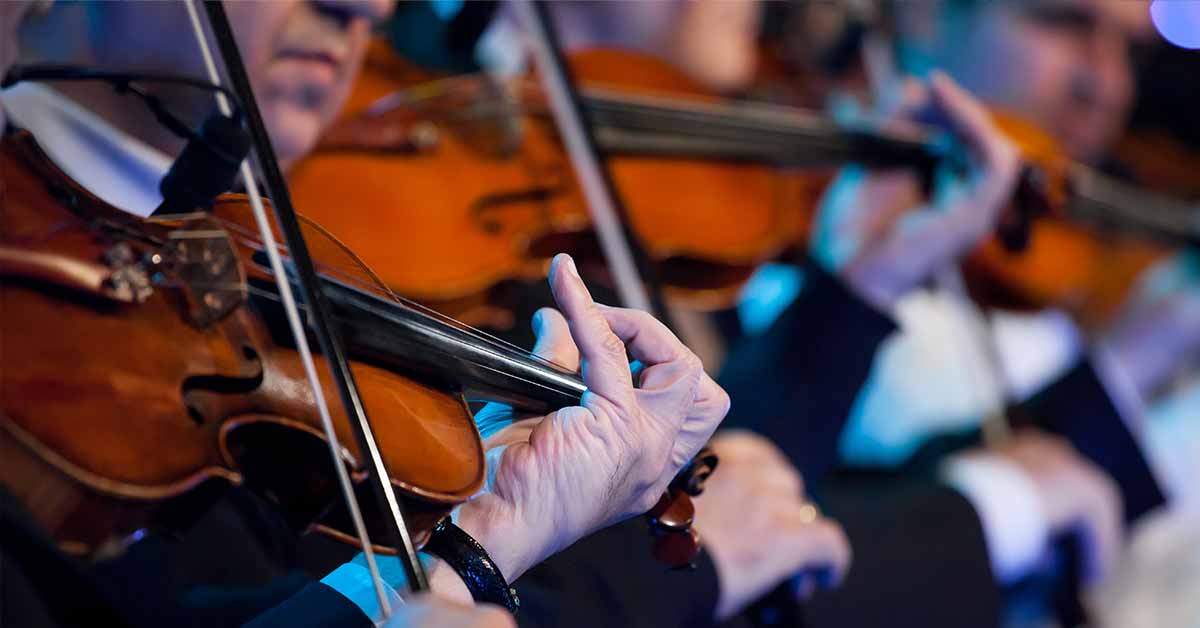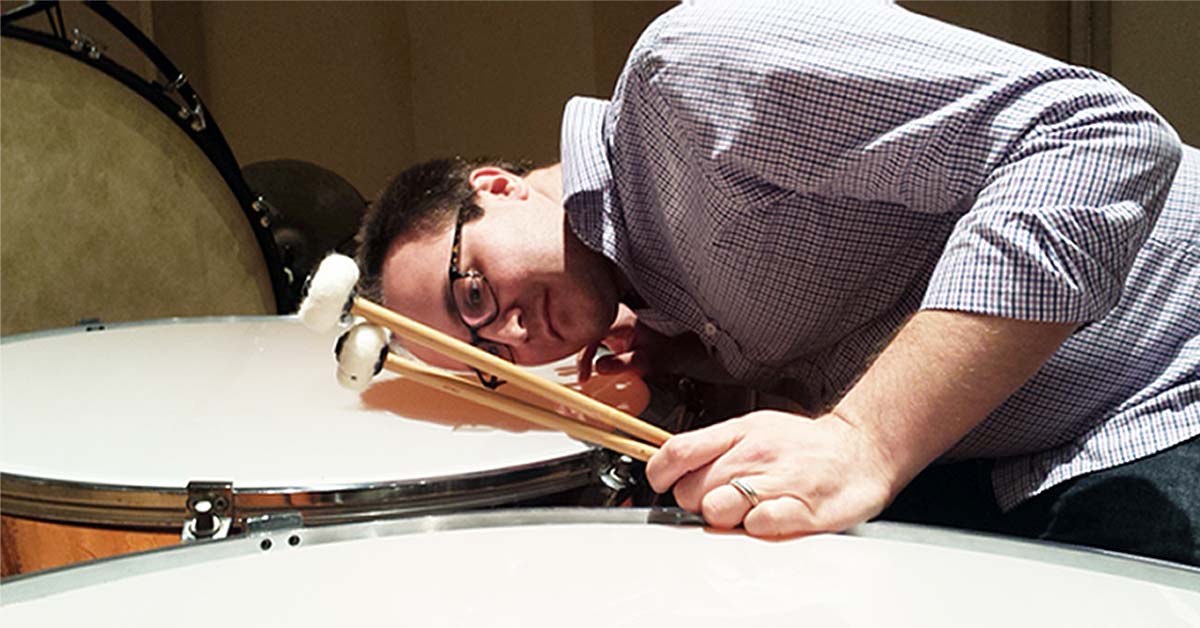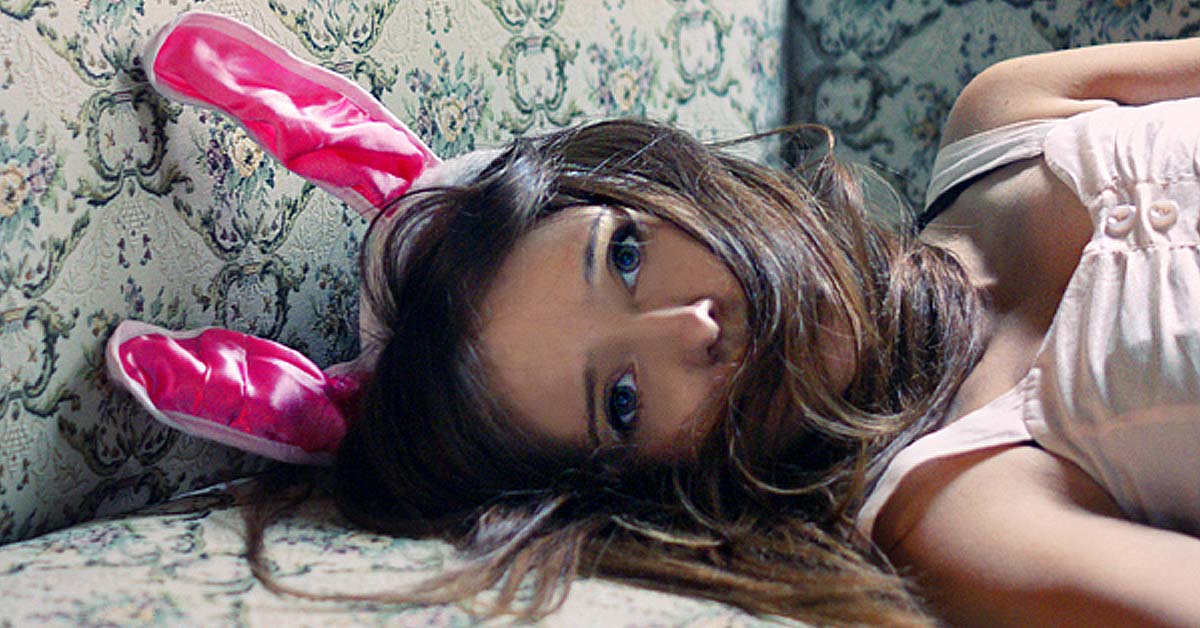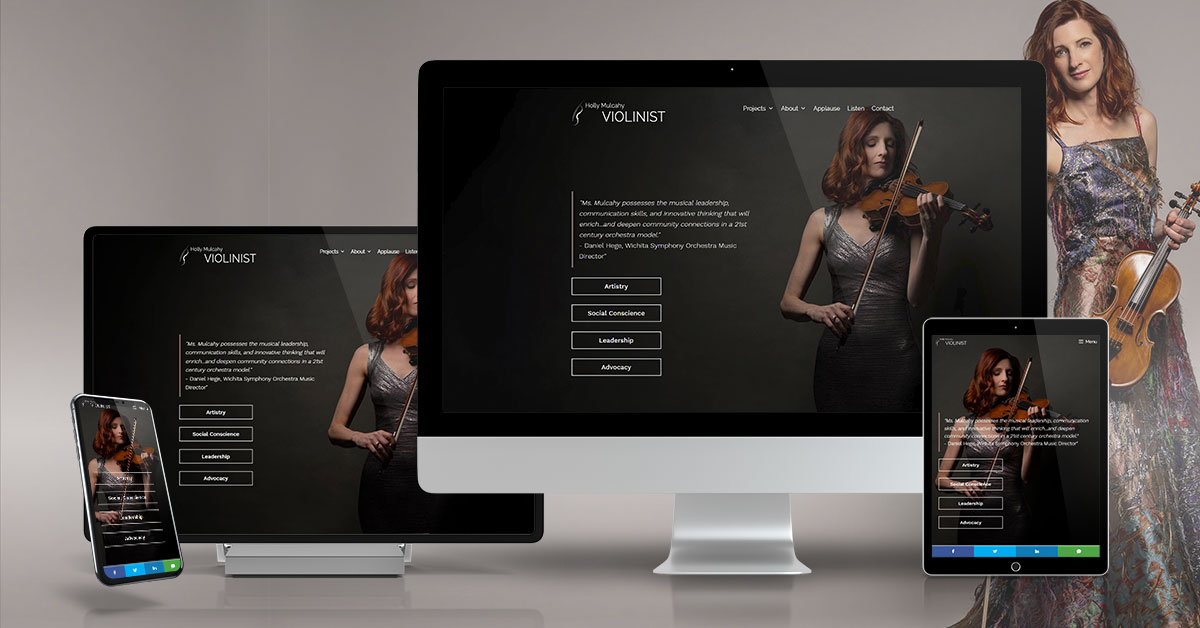One of the most popular debates about orchestra concerts is when to clap. There are two types of clapping experts; one that assures you that clapping between movements is ok and that there are really no rules and the expert that says only to clap when the piece is completely finished.
Ironically, both types of experts have historical and/or traditional elements and facts that can justify their beliefs. But instead of arguing what is best and why, I wanted to share some general guidelines I’ve observed both from the stage and as an audience member. This guideline should not be considered rules, but merely observances of what typically happens during orchestra concerts so the newcomer (and seasoned patrons) can feel more confident with their timing of when to applaud and not feel out of place.
During the course of a concert, audiences will usually applaud twice before the music even starts. This is the easy part!
- Concertmaster enters, clap. The concertmaster bows, representing the orchestra, and then tunes. You can stop clapping once the tuning starts.
- Music Director enters, clap. Keep clapping; generally the music director will invite the whole orchestra to stand and share his or her acknowledgment.
Next up is the music. By now, you’ve probably thumbed through the program. Take note of how things are laid out in the program as these will be your clues when a good time to clap confidently might be. For example, here is a sample program I’ve come up with:
Really Edgy Title: Modern Composer (4:03)
Violin Concerto: Well Known Modern Composer (35:50)
- First Movement
- Second Movement
- Third Movement
——Intermission——-
Symphony #8: Traditional Recognizable Dude (30:04)
- Adagio; Allegro
- Andante
- Scherzo
- Presto
The first piece on the program is a single movement. In addition, in some programs a minute timing is offered to give an idea how long you are going to be listening to a work. At this point, you might not have an idea how this work will end so deciding when to clap comes down to how the work will end.
- If it ends loud your instinct will assist you and you will feel an urge to applaud. Additional visual cues can help: look at the body language of the musicians, especially the conductor.
- If it is a quiet ending piece, you still need to look at visual cues on stage. Sometimes when a conductor ends a quiet piece, they leave their arms up in the air, as if to suspend the moment. Once they put their arms to the side the piece is more than likely finished. Someone else will catch the clue and they will applaud. If unsure, don’t applaud until others have started.
The conductor will leave the stage. If applause continues, they will come back on for an additional bow.
The conductor returns to stage with the soloist. Both conductor and soloist accept the applause, and then the second piece on the program gets under way.
This is where the fun begins. Some concertos have fiery first movements that end in a flare that makes the audience want to jump out of their seats. Tchaikovsky’s concertos are famous for this!
- If this first movement ends in a flash and there is a sudden burst of applause, by all means join in. You might have even started it. There is absolutely nothing wrong with releasing some energy here. And a gracious soloist will bow slightly, hopefully smile, and then regroup. But if you don’t feel like applauding, you don’t have to!
- If the first movement has a quieter ending one, enjoy the feeling of transfixion and wait. There is no need to applaud. You still have two more movements to enjoy and sometimes breaking a moment like these can detract from the general effect of the mood the orchestra and soloist just set.
- If the first movement is not super flashy or quiet, say a Mozart concerto, some of the audience typically will applaud. You can join or not. It is highly unlikely the whole audience is applauding at this point though, so you might feel awkward if just 20 people applaud.
- The guideline is the same for the 2nd movements of concertos. Depending on how they end and the vibe from the audience should help dictate if you should applaud.
- The end of the final movement is easier. If it is a loud and fast ending, your instinct will guide you. If the work ends quietly, don’t rush to applaud, enjoy the feeling and wait for the body language on stage to relax and show the audience when the piece is done.
The soloist and conductor will both leave. Keep applauding. The soloist comes back and takes a solo bow. Keep applauding. If the vibe in the hall allows, the soloist and conductor usually come back out and acknowledge the orchestra and take general bow for everyone onstage. Keep applauding until the soloist and conductor leave the stage for good.
After intermission will likely be a symphonic work in several movements. Like the concerto before, some of the movements might beckon you to applaud. Sometimes even before the movement is finished, there can be some spots where every bone in your body is wanting to stand up and yell with joy. Some of the most memorable moments for me while performing have been when audiences just can’t contain their excitement or enthusiasm.
Generally, orchestras will tell you it’s ok to applaud between movements. However, sometimes it feels obligatory. If you have lost track of which movement the orchestra is on, or feel hesitant to applaud until the very end, wait for the visual cues. If it’s a quiet ending, watch the conductor and wait for him or her to put their arms down. If it is a fast and loud ending, visual cues will help, but typically people around you will be clapping so you can feel comfortable to join in.
A note to conductors
Many of you do a fantastic job helping an audience know when to clap. Many of you politely acknowledge, with a slight nod and smile, people’s applause between movements. Many of you show that a movement isn’t done just yet by keeping your arms visible to the audience and give a clear movement to let them know the piece is finished. But there are the exceptions:
- At the end of a loud and fast symphonic work, please don’t keep your hands in the air as if there is more music. People don’t know what to do with this and when you finally put your arms down, the applause trickles in very pathetically. Don’t do this! People want to release energy directly after a loud fast work. Let the audience know definitively that this is the end.
- Sometimes it’s good to share with the audience that there might be a trick ending. If your orchestra is performing Sibelius Symphony #5, or Tchaikovsky Symphony #6, share with the audience what happens in the work. Giving “permission” to clap after the 3rd movement in Tchaikovsky #6, for example, would bring relief to some and direction to others. After all, applause is a reaction to energy, and sometimes a good release is so therapeutic. But also restraining can be quite powerful. Either way, it can be nice to share your views.
- It’s not a great idea to shoot glaring looks or a frantic waving arm to “discipline” an audience member who has clearly clapped in a wrong point. People will remember your actions much longer than that of the offender(s).
A note to frequent audience members
Thank you for being a frequent audience member! You are the core of what keeps orchestral music alive and we are grateful! While most audiences are gracious with newcomers, some can be a bit prickly and it would be nice to adjust that point of view:
- While it is nice to feel educated and refined by not clapping when you deem not appropriate, it is rather unkind to correct people or complain about those who broke your rule by clapping in between movements.
- One of the best things about live orchestral concerts is the shared experience, and someone’s first time might be their last if they are made to feel stupid or unrefined.
- Be glad and quiet if someone claps out of place (by your rules) because this is a person who has made an effort to come to a live event that you also love. Be glad there are people supporting the arts!
A note to the new comer
Thank you for making time to come and try something new! We are always thrilled to see new people enjoying an art form that we’ve been dedicated and committed to for years. Go to your concert experience confidently:
- Don’t let your insecurities hold you back from attending a concert. You aren’t the only one who is experiencing this for the first time!
- If you are the only one clapping, don’t worry about it! Nobody really remembers this anyway; it will be the cell phone that people will fixate on. I promise!
- There are no rules, just a few guidelines I listed above. Coming to a live orchestral concert is more important than any rules, but if you still feel concerned about clapping in the wrong place, just wait and follow others’ leads.
This is my rule for everyone: You should never feel bad for clapping; however, you should feel bad for making others feel bad for clapping. For more on audience behavior, check this out.










Holly, enjoyed your extensive “To clap, or not to clap” post. Lays it all out there beautifully. Particularly impressed by your reminder to experience concert goers re being kind (and maybe joining in with newbies in spontaneous expressions of enthusiasm between movements).
There are many examples in the historical record of when the core classical and operatic repertoire was “new music” of first performances being interrupted by enraptured audiences (Mozart writes about having to encore individual movements of his symphonies and concerti, there are also contemporary accounts re premieres by Beethoven, Haydn, Mendellssohn, Liszt, Paganini; as well as opera perfs where arias or ensembles were repeated due to audience enthusiasm).
Perhaps you could cite a few of these in a follow-up post, to remind those “keepers of the tradition” that the “polite silence” approach to audience behavior is something that is quite new, and not necessarily what The Great Composers expected or wanted.
I venture that if Mozart had experienced the way today’s audiences behave at one of his concertos, he would have written Papa Leopold to lament what a fiasco the performance had been. “You would not have believed what a FIASCO my concerto was in Denver last night! I am devastated! The audience SAT LIKE STATUES through each movement…. Even that cadenza for the Allegro maestoso I showed you last month (and we agreed it was a certain winner) made NO IMPACT WHATSOEVER. They clapped politely after the Rondo Finale (during which I improvised an even better, more flashy cadenza and drove the tempo like a runaway carriage). I’ve had better response from the English and the archbishop himself.
Just sayin’
I have ambivalent feelings about this one. In the 19th century people would spontaneously clap just as we do with jazz today. The connection between musicians in the audience was much tighter then.
An example is Brahms’ Academic Overture that included a college drinking song as a theme. The audience spontaneously started singing along with the orchestra at the premiere. Great fun.
But no thanks to the league of blue haired ladies from the early part of the 20th century, that spontaneity has been all but lost. Modern audiences, then following that misguided tradition, are expected to sit quietly and still until all four movements of a symphony or three movements of a concerto are over.
So is it any wonder that today’s kids who freely clap at rock concerts and jazz performances are turned off when someone shushes them from an adjoining seat. Often an experience like that becomes their last visit to a concert hall.
This is by far more of a tragedy that someone clapping between movements. Soon we will be performing to empty seats.
My opinion is that is shows respect for the orchestra and the composer to refrain from clapping between movements. Certainly someone should not be glared at for doing so, however. It would seem that they would pick up on cues from the rest of the audience in the future. I enjoyed this article/blog.
Thanks for your thoughts. Most orchestra players appreciate and are not at all disrespected by applause between movements. We like that people enjoy something and are moved to share their feelings so sincerely. It’s strange not to get any feedback but forced quiet after a rousing movement. And release in energy can sometimes be a relief for us on stage.
Great article, Holly! All I really want when I go to a concert is an opportunity to absorb the artistry being offered. Respect for the orchestra and composer is a great goal for an audience. If that was the baseline, a lot of this stuff wouldn’t matter.
I score the symphonic show for Trey Anastasio (guitarist with the band Phish). We’ve done the show with a number of major U.S. symphonies, and before his NY Phil/Carnegie Hall concert he mentioned to me how mind-boggling it is to think about the massive amount of preparation (each musician, from the beginning of their musical training) that goes into any given orchestra concert. This is hard to fathom for someone who hasn’t walked in those shoes, especially for the newbie but also for the experienced concert-goer. And we have an even greater society-wide disconnect: music is everywhere, anytime you want it, for free, sometimes even when you don’t want it. But I’m with you: I’d rather have a newcomer at the concert and have them want to come back. Is there a way to help audiences better-appreciate the life-long dedication of a musician?
A pops show is a different animal; audiences do pretty much what they want. One of my pet peeves in pops shows is early applause during a quiet ending to a song–can be such a mood breaker! That night at Carnegie Hall with Trey I experienced a very memorable “soft ending.”
Trey’s fans are quite exuberant, but very respectful of Trey and, from what I’ve witnessed, the orchestra. Just to give you an idea, one show started with the concertmaster receiving a very loud standing ovation when coming out to tune. Even the string section had to smile.
During our show at Carnegie Hall Trey premiered an orchestral version of one of Phish’s most popular songs, “You Enjoy Myself.” For me, it was a challenge to score and arrange in a number of ways, not the least of which was orchestrating the “vocal jam” at the end of the piece, of which no two are alike. Throughout the piece the crowd reacted positively as Trey and the orchestra (just orchestra and electric guitar–no other band members) presented this new take on an old favorite.
In a Phish show, the vocal jam always starts out with the same riff, sung by the band members, and then morphs to wherever the spirit leads. I started the riff in the strings, morphed in my own way, added a solo vocal line over the strings and wound the piece down to nothing. It was all written out of course, but the crowd, who had indeed really “enjoyed themselves,” had absolutely no idea how the piece would end. The mood of the audience followed the orchestra’s written diminuendo and as the last note faded, no one dared breathe, making sure the piece was really over. At least a half-second later a cheer erupted from the hall which the NY Times reviewer called “the loudest, wildest response I have ever heard for anything at Carnegie.”
And I couldn’t have been happier with the timing.
Interesting to see an activity which was originally at the sole discretion of the audience now, at this point in history, being defined and regulated by the performers. How the dynamic has changed!
Please keep seated while clapping at the end !
Standing is a show of appreciation, as one can only clap so loud. I like a genuinely sincere standing ovation if it is well deserved.
No mention of the audience that jumps to its feet at the end of a performance like it was out of the world when in reality it is just another good but not special performance. But the they would stand and applaud a dog act not considering what the dogs were doing on stage.
lol…too much work.
But why do we greet the beautiful sounds that come from the stage with the clattering, jarring, staccato noise of hands being slapped together … not to mention the accompanying whistling, hooting and hollering?
For many orchestral players I know, the hooting an hollering are welcome because it generally means the impact of a concert was a success and people can’t contain (nor should they) their excitement. Once that disappears, the excitement of the art starts to fade.
Very interesting. I liked your tone. You don’t mention opera, but your remarks still apply.
I once attended a performance, a very long time ago, of Gian Carlo Menotti’s opera, ‘The Consul.’ At the end of Magda Sorel’s area, “To This We’ve Come,” the audience erupted in the most vocal standing ovation I’ve ever experienced. We let loose, so to speak. The tension of her singing had been almost too much to bear. Here is Patricia Neway in a televised performance: https://www.youtube.com/watch?v=AIB9cGlLkm0. About Neway: http://www.masterworksbroadway.com/artist/patricia-neway. (I may have seen someone else in the role, because in 1949-50, during The Consul’s long Broadway run, I hadn’t yet attended an opera.) Memory plays tricks.
Louis Torres, Co-Editor, Aristos (An Online Review of the Arts)
There’s no excuse for clapping before Siegfried ACT 2 is completely over. Almost everyone will start clapping about 5 bars before it’s over and that drives me nuts!!!!!
It is frustrating; but the newcomer, the ones you want to keep coming, do not know this usually. So there is an excuse.
My orchestra once had an assistant conductor who turned around and lectured the audience for clapping after the first movement of Beethoven’s 5th symphony. (This was a neighborhood outreach concert at a church.) He informed the audience that they were not to clap until after he brought his arms down at the end and turned around to face them — that was how they would know the piece was over. Well, we got to the end of the piece and of course (being a genius or something) by that time he had forgotten all about his admonishment. There was dead silence for a few seconds until he remembered what to do and turned around. Hard to say if it was more mortifying or hilarious.
Interesting side note: at the beginning of this concert, the executive director of the symphony asked the audience “Who’s never been to a symphony concert before?” Most of the audience raised their hands. The next year, amazingly, they invited us back (with a new assistant conductor – ahem) and the executive director asked the same question. Again, most of the audience raised their hands. In other words, hardly anyone who’d been to the first concert came back a year later. It was like the previous audience was a bunch of weeds and the guy had sprayed them with Weed-B-Gone.
This begs the question of “when do you applaud,” but there is also the very rare time at the end of a piece when the audience is so VERY transfixed that there is complete silence for many seconds. One such occasion happened early last August at the “Les Preludes” concert (this is the traditional ending concert of the summer season for the students at Interlochen) when the World Youth Symphony played Strauss’ “Death and Transfiguration.” It must have been 10 – 15 seconds before the crowd clapped. It seemed like hours and was magical. This has happened several times in my journey as an audience member. It’s a privilege to be part of something shared such as this! Again, it was magical and even a bit profound.
Very interesting article. I would be interested in your thoughts on holding the silence at the end of certain works (e.g., Mahler 9).
I absolutely love when applause are suspended at the ends of works like Mahler 9, Verdi’s Requiem, and the like. Sometimes a maestro can successfully hold the moment and the audience stays in the moment. I think if the maestro were to say “hold applause at the end” some might feel pressure and not enjoy the performance, or they might forget.
Although I don’t see it here, there is at least one person in similar discussions who steps forward to profess that symphony concerts should be like jazz concerts or rock concerts, with audience members free to applaud after any solo and even to enjoy the music by humming along. Rock concerts are generally amplified to a point where it is nearly impossible to disturb those around you, but classical music contains very soft passages which would be completely obliterated by applause. I usually ask what the individual would think if they attended a play and the audience applauded periodically and cheered when actors delivered lines they liked, and the usual response is that plays are different in that audience noise would cover up the lines of the play.
Some say only applaud she the conductor turns and faces you. Just try to learn appropriate Symphony behavior. I love it?
Excellent article on applause!
Thank you very much!
Hey, Holly, you did a really nice job of demystifying the clap/don’t clap etiquette for classical concerts. What I’ve noticed recently takes the the between-movements applause to a new level. When did it become necessary/appropriate for audience members to add stadium-level whistles to their enthusiasm? I find that sort of ear-piercing noise quite disturbing in a formal concert hall, much less in a chamber music setting. And for that to happen between movements is, to me, egregious. Am I being an old fuddy-duddy?
Thanks for your comments and question. I’ve experienced the ear piercing whistles between movements and at the end of symphonic works. I love the enthusiasm but also am concerned about my own hearing. I can’t imagine how painful it would be for those with hearing aids! Close enough, those whistles can cause ears to ring for some time!
I think clapping and even cheering is fine between movements. For example, after the Schumann Symphony’s 2nd symphony’s second movement, it’s entirely appropriate to show enthusiasm for the violins and the feat they just displayed. I’m finding people are not wanting to be told to remain quiet or that there are unspoken rules to abide by, people are paying for an experience and expecting to show how they feel without shame being cast upon them. That’s just fine! But I do agree with you that the ear-piercing whistles are a bit painful.
What a joy it is to have this balanced discussion of to clap/not to clap.